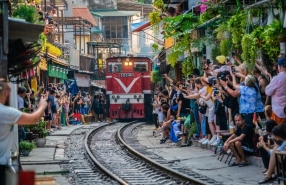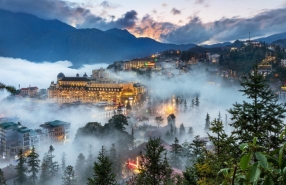Interesting Things To Do In Ninh Binh, Vietnam - Visit Bai Dinh Pagoda

With a history spanning over 1000 years and intertwined with the lands of numerous feudal dynasties, from the Dinh and Early Le to the Ly, this complex is nestled to the west of the ancient capital Hoa Lu, situated in Gia Sinh Commune, Ninh Binh Province, approximately 95 kilometers from Hanoi. Encompassing a vast area of 539 hectares, it hosts both the ancient Bai Dinh Pagoda and the new Bai Dinh Pagoda. Recognized as the largest complex of Buddhist pagodas in Vietnam, holding numerous records not only in the country but also in Southeast Asia and Asia, Bai Dinh Pagoda Ninh Binh is surely a destination that you should visit in your itinerary in Vietnam.
Table of Contents
1. A glimpse of the spiritual and historical site
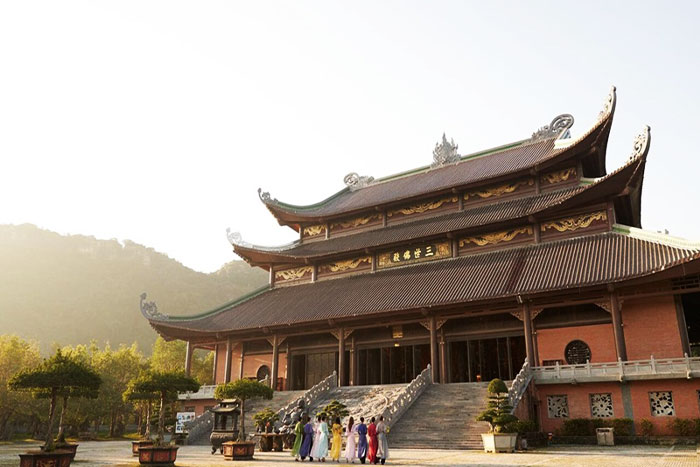
- Address : Gia Sinh, Gia Vien, Ninh Binh
- Opening hours : 7:00 AM – 9:00 PM
- Entrance fee: Free (Note: It’s not required for Bai Dinh Pagoda entrance fee; however, the journey from the entrance gate to the temple complex is quite far. It’s recommended for an electric car ride instead)
- Service fees :
- Parking fee : 40,000 VND/car or 15,000VND/motorbike
- Electric car : 30,000 VND/person/way or 60,000VND/person/round trip
- Visit Bao Thap Tower : 50,000 VND/person
- Toilet fee : 2,000 VND/person/time
- Google map : https://maps.app.goo.gl/Xt9aNoM72jfWTHQq9
Bai Dinh Pagoda, one of Southeast Asia's largest temples, holds multiple national and regional records. In 2012, this pagoda holds 9 record:
The most extensive gilded bronze Buddha statue in Asia
Southeast Asia's biggest bronze Maitreya Buddha statue
Vietnam's most extensive temple complex
The pagoda boasts Vietnam's most substantial bronze bell
The pagoda grounds house Vietnam's largest jade well
Asia's longest Arhat corridor is found in the temple area
Vietnam's largest collection of Arhat statues is situated in the temple area
The pagoda holds the record for planting the most Bodhi trees in Vietnam
2. History of Bai Dinh Pagoda - The Holy Land In Ninh Binh
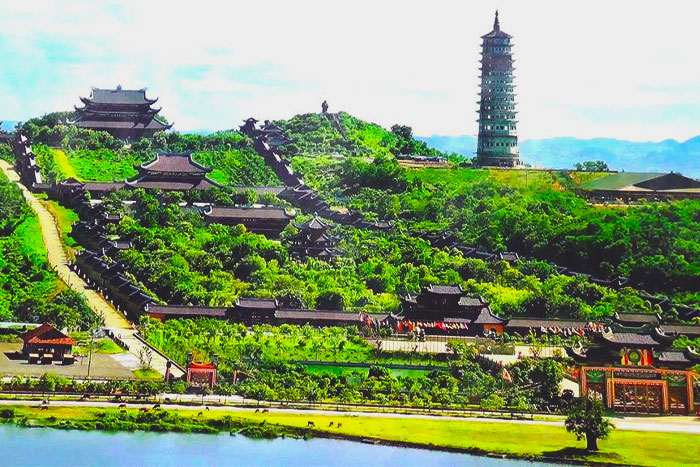
3. Majestic architecture of Bai Dinh Pagoda:
3.1. The new Bai Dinh Pagoda:
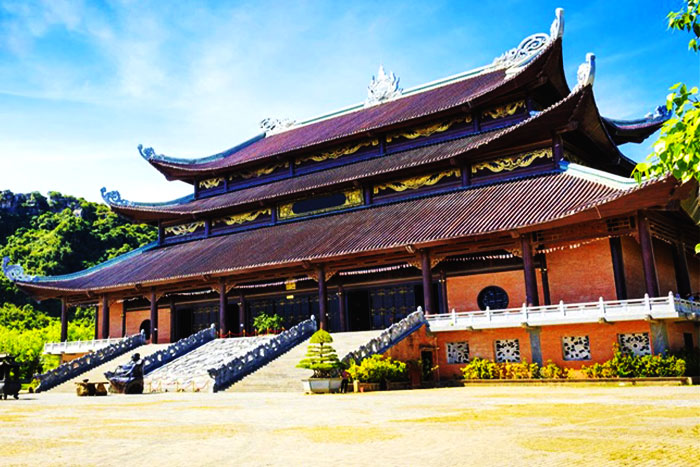
- Bell Tower
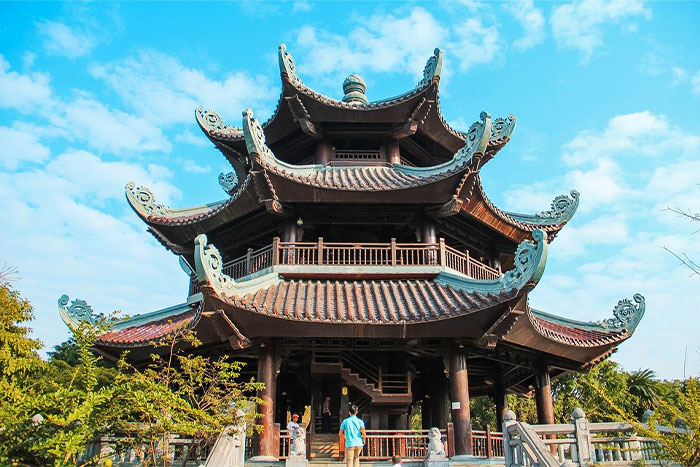
Rising 22m high and 17m wide, resembling a lotus plant, the ancient bell tower boasts an octagonal shape with a three-layer curved roof. It houses a record-breaking 36-ton bronze bell and a 13-ton bronze drum in the Dong Son Bronze design.
Corridor with Arhat Statues
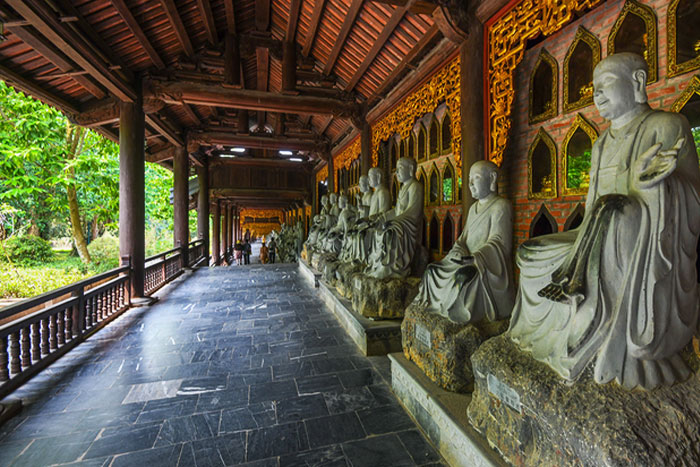
This wooden structure features a distinctive "Gia chieng – Chong ruong" truss style, hosting 500 stone Arhat statues, each a masterpiece from the villagers in Ninh Van stone craft village (Hoa Lu). It is recognized as the longest corridor of its kind in Asia.
Bodhisattva Avalokitesvara Hall
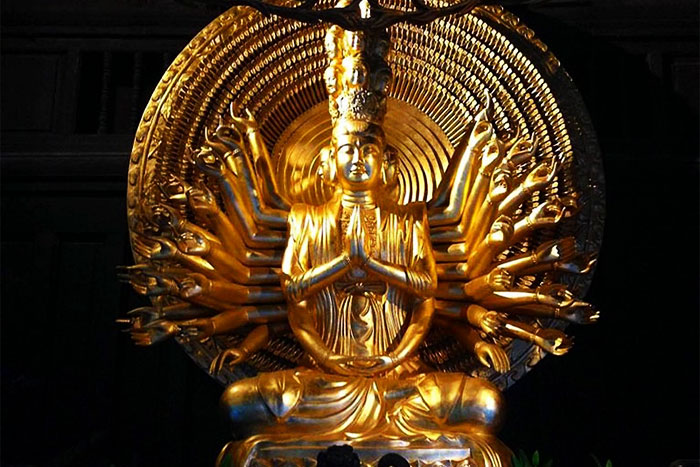
A seven-compartment ironwood structure housing an 80-ton gold-coated bronze statue of Bodhisattva Avalokitesvara, the largest in Vietnam.
Phap Chu Hall
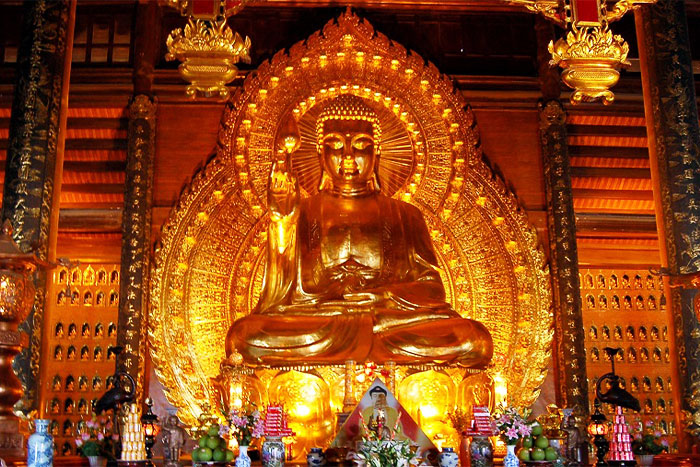
A five-compartment hall featuring a 10m high, 100-ton bronze Buddha statue, recognized as the largest in Vietnam.
Tam The Hall
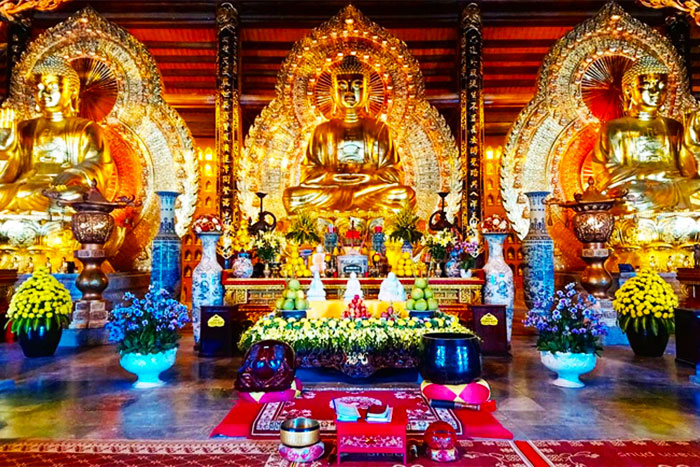
Perched on a hill, this hall houses three bronze statues of Tam The Buddha, the largest bronze Tam The statues in Vietnam.
Bao Thap Tower
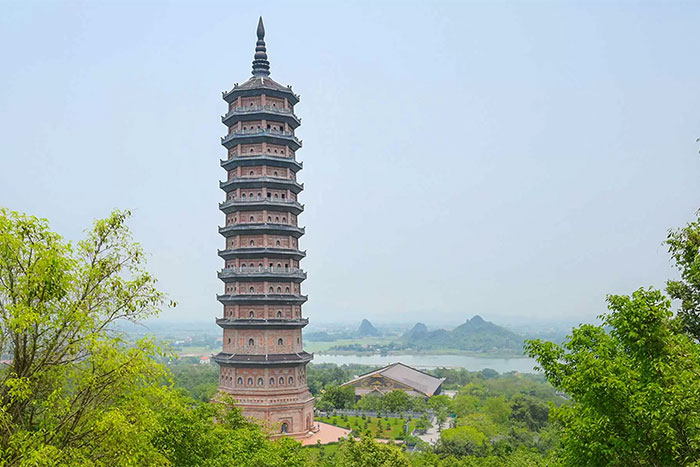
A 100m tall tower with 13 floors, holding sacred Buddha relics, featuring intricately sculpted images related to Buddhism.
- Maitreya Statue
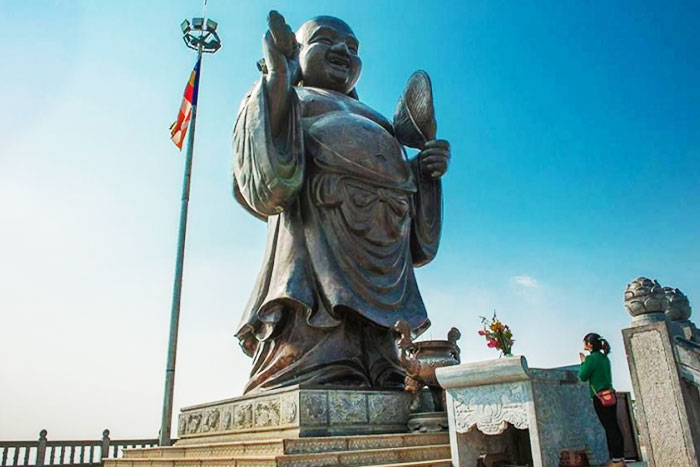
At the highest point, a bronze 10m high, 80-ton Maitreya Statue, recognized as the largest outdoor bronze Maitreya Statue in South East Asia.
You can visit other notable attractions in the new Bai Dinh Pagoda Ninh Binh, such as the Stone House with 55 compartments, each made of stone and placed on a stone turtle. Additionally, visit the Bodhi Tree Garden, home to the largest collection of Bodhi trees in Vietnam, including 100 trees from India.
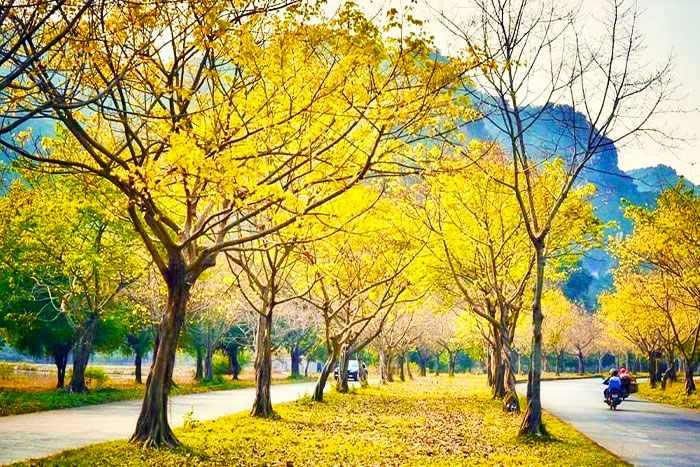
3.2. The ancient Bai Dinh Pagoda
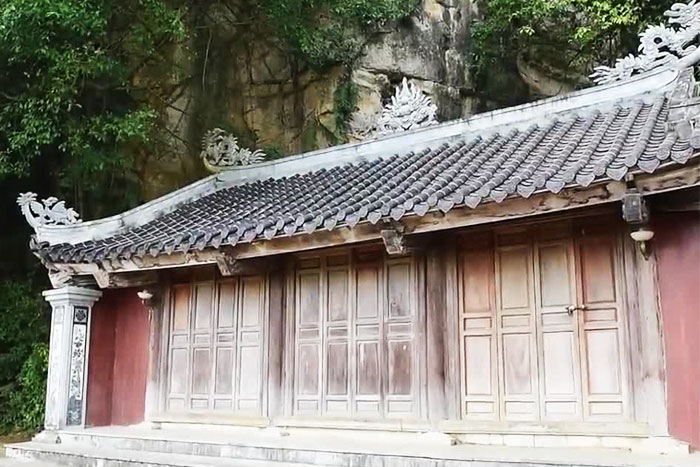
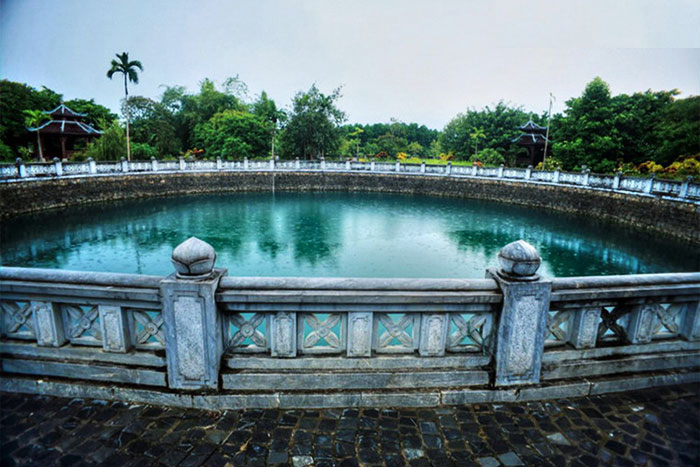
4. Best time to visit Bai Dinh Pagoda
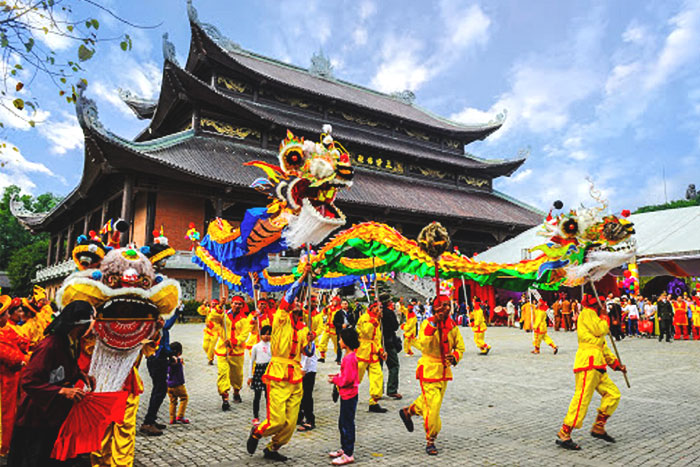
From January to March of the lunar calendar, amidst the gentle spring climate is the best time to visit Bai Dinh Pagoda. This season offers a delightful blend of sightseeing tours, pagoda prayer ceremonies, and engagement in major festivals within the region. However, visiting Bai Dinh Pagoda during other times of the year ensures a more tranquil experience, away from the hustle and bustle.
5. How to visit Bai Dinh Pagoda
How to get to Bai Dinh Pagoda ? To get to Bai Dinh Pagoda, you first need to travel to Ninh Binh from Hanoi. Here are various transportation options:
By bus

Depart from My Dinh or Giap Bat bus station in Hanoi and take a bus to Ninh Binh, with a fare of approximately 120,000 VND for a 2-hour journey.
By motorbike

Begin your journey from Giai Phong Street, heading towards Phap Van - Cau Gie Highway, and proceed straight. Follow the signposts along the roads until you reach Ninh Binh Province. Once in Ninh Binh, it's easy to navigate to the pagoda.
By train
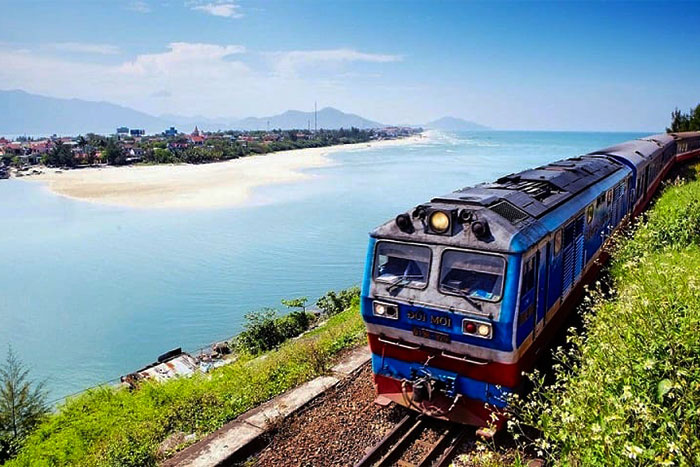
6. Helpful tips
- When visiting this spiritual site, opt for modest and courteous attire.
- Choose comfortable sneakers over high heels to safeguard your feet and ensure easier navigation through the hilly and steep terrain.
- Carry sunscreen or umbrellas for sunny days and rain gear for the rainy ones.
- Refrain from touching the statues with your hands.
- Strictly prohibit drawing or painting on the statues or walls; remember to contribute to the donation boxes to preserve the pagoda's beauty.
- Exploring Bai Dinh Pagoda at night offers a captivating experience, allowing you to relish the serene atmosphere and behold the enchanting lights of the pagoda. (Note: The electric car operates only until 8:00 pm)
- When contemplating what to pray for at Bai Dinh Pagoda, it's important to focus on sincere wishes, particularly for a year filled with prosperity, peace, good fortune, and health for your family. Success in your prayers is enhanced by genuine intentions and the respectful offering of incense to the Buddha.
Certainly, Bai Dinh Pagoda Ninh Binh stands as a wonder crafted by the synergy of nature and human endeavor, proudly representing Vietnam with its distinctive architecture, cultural richness, and historical significance.
To ensure a satisfying experience far beyond your expectations, please CONTACT AUTOUR ASIA, TRAVEL AGENCY VIETNAM now.
> The must-try dishes in Ninh Binh
> Ninh Binh Travel Guide
> Ninh Binh tour package
> North Vietnam Tours
Related travel guide
Other similar articles
CUSTOMIZABLE BY LOCAL EXPERTS
Personalized trip at the original price!
REFUND GUARANTEE
We believe in our work and promise to give you money back.
GOOD PRICE / QUALITY
95% satisfied more than expected!
24/7 LOCAL SUPPORT
We are always available online to provide assistance at any time.
Most read articles
Autour Asia is highly recommended on
Embracing the mission of "Satisfied more than expected" and providing authentic experiences, we have received numerous recommendations on reputable travel forums:














